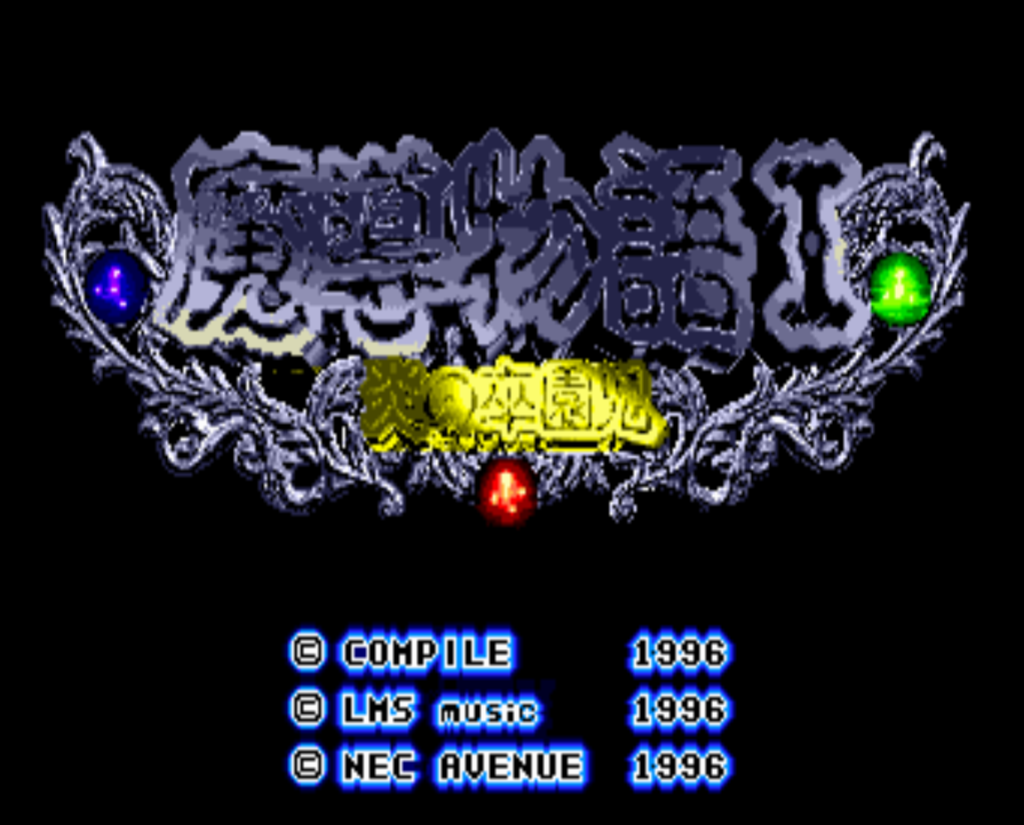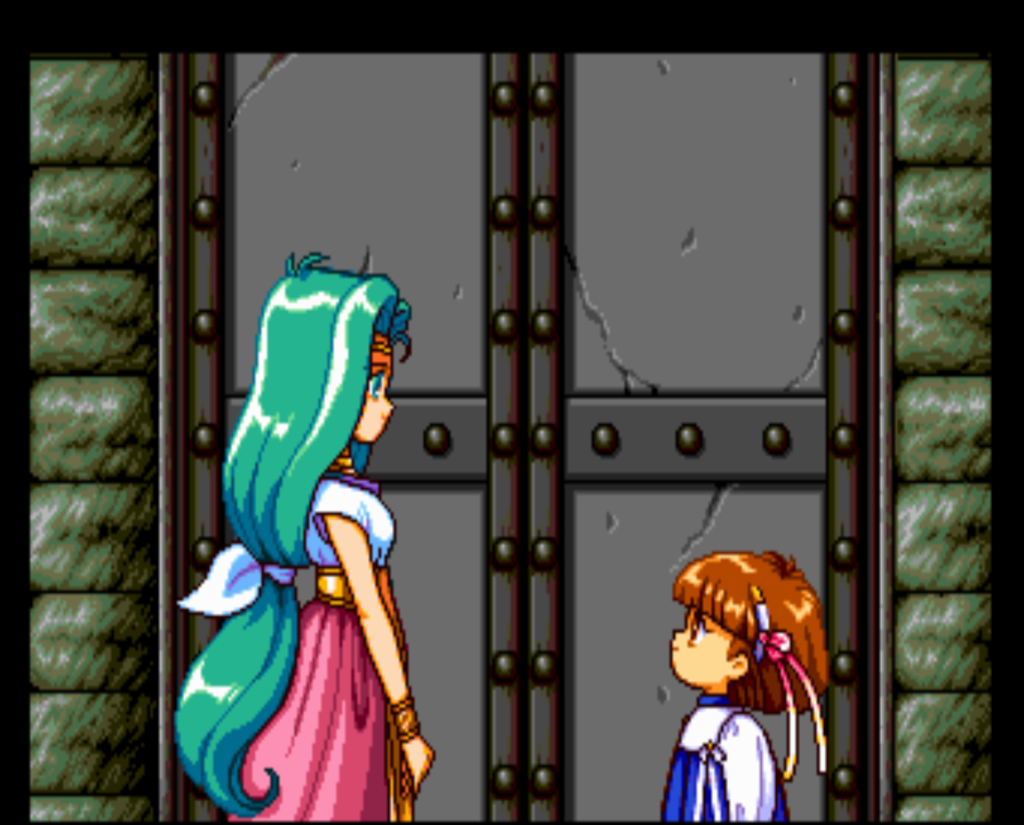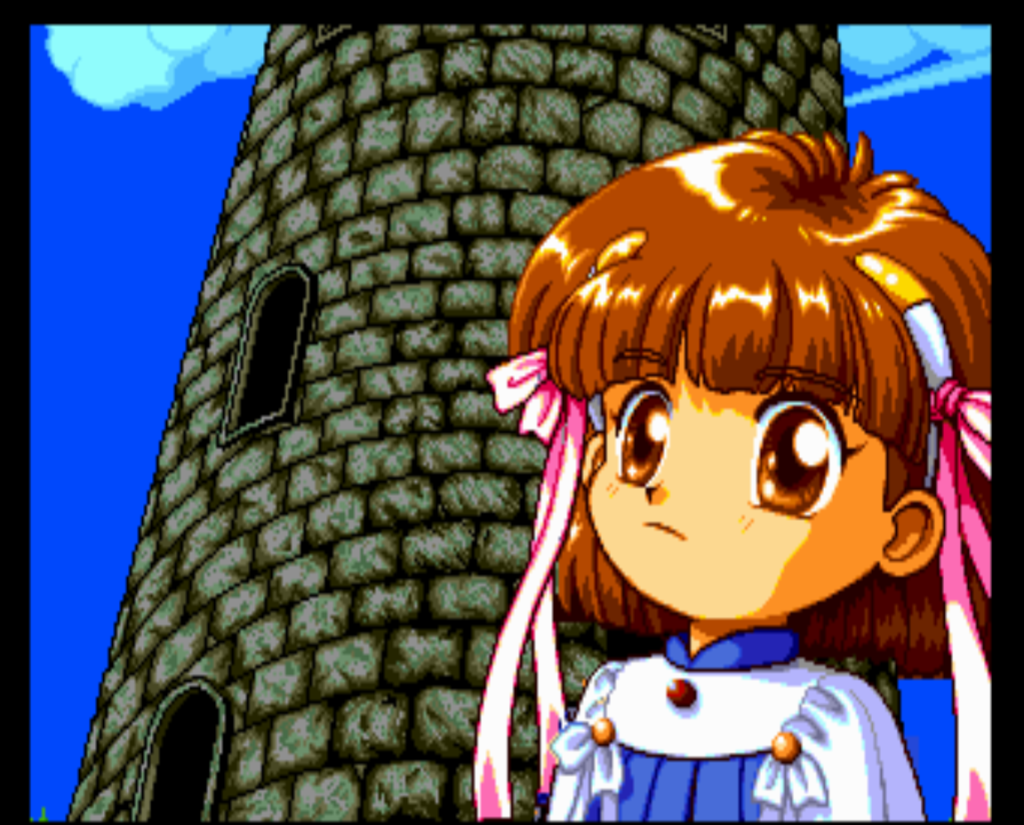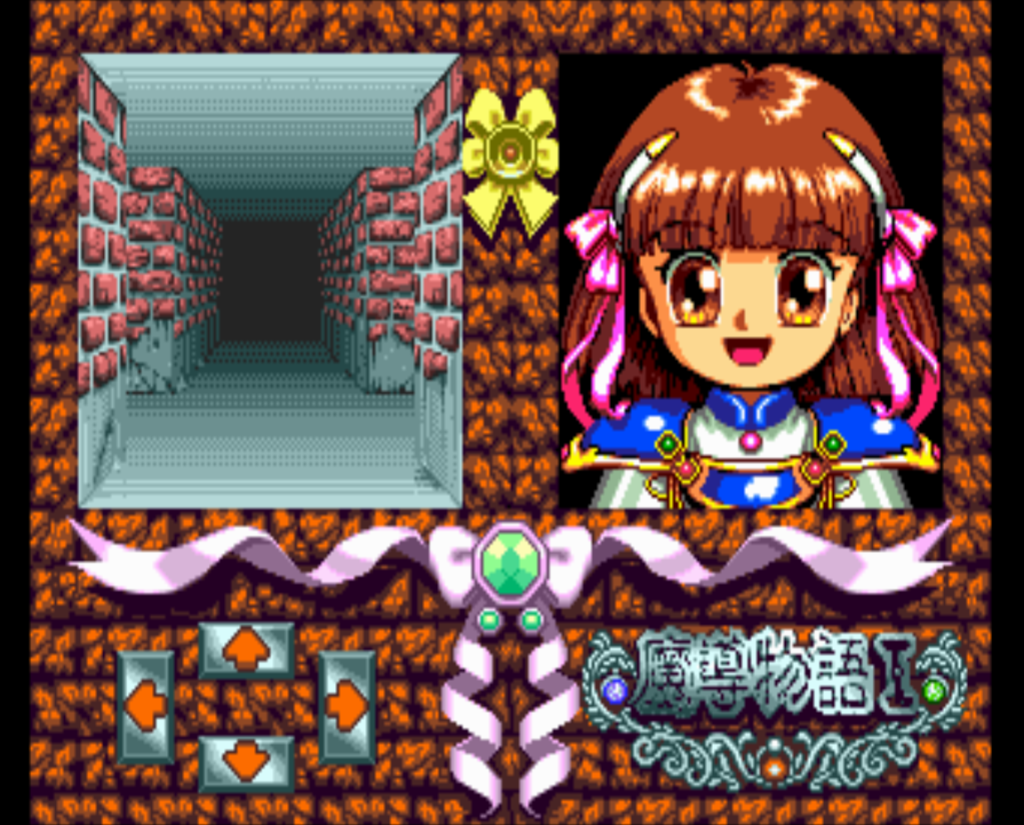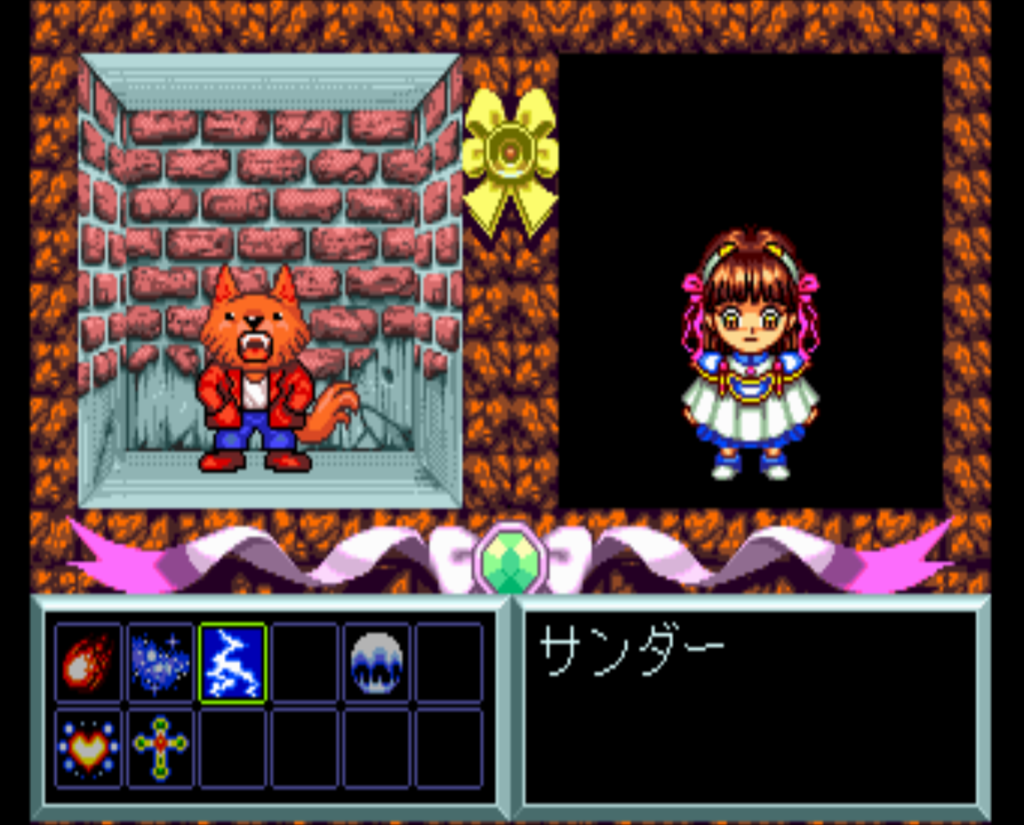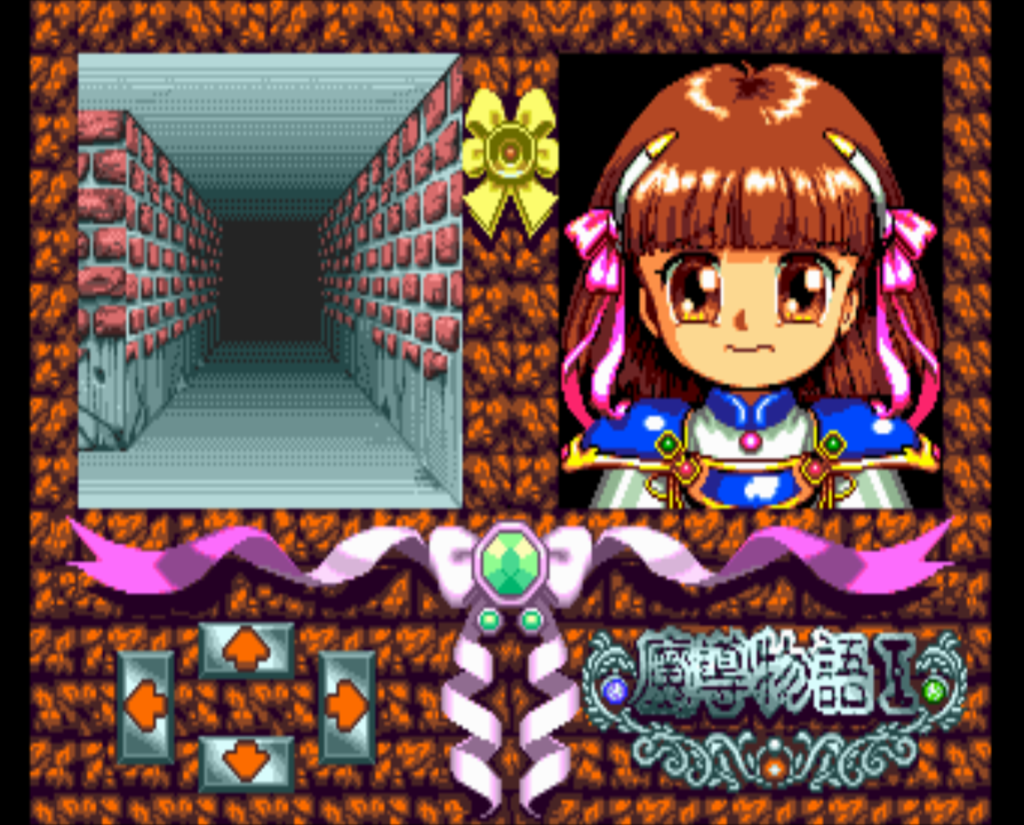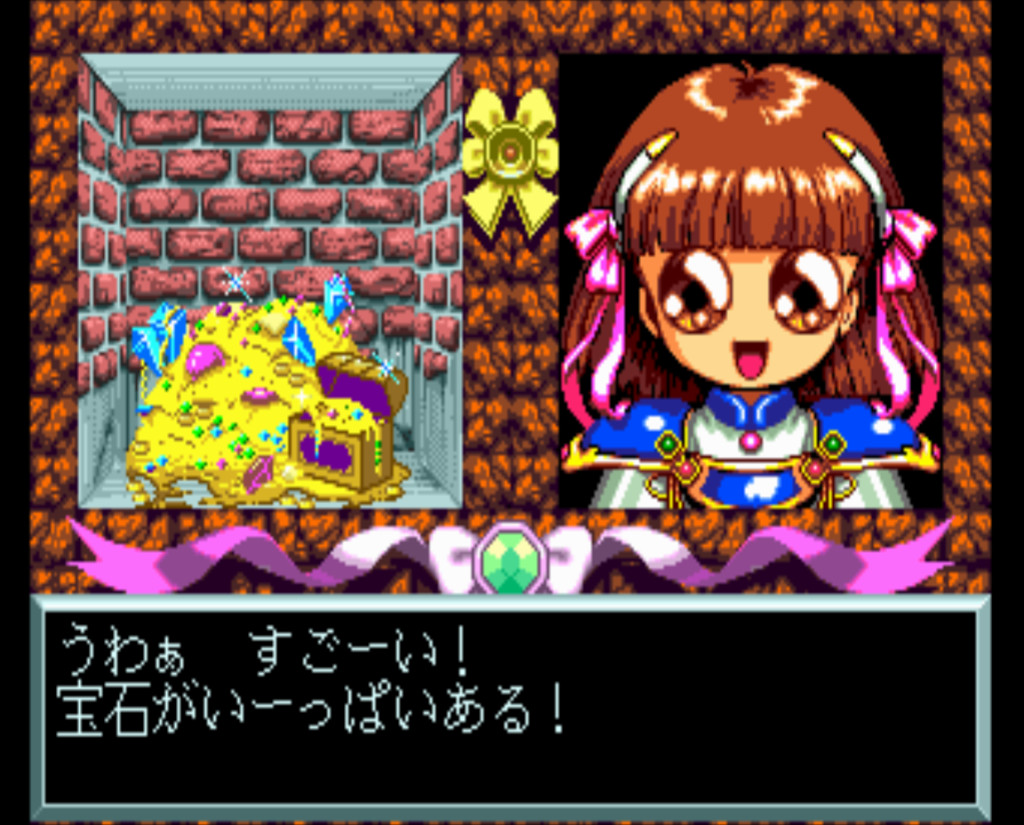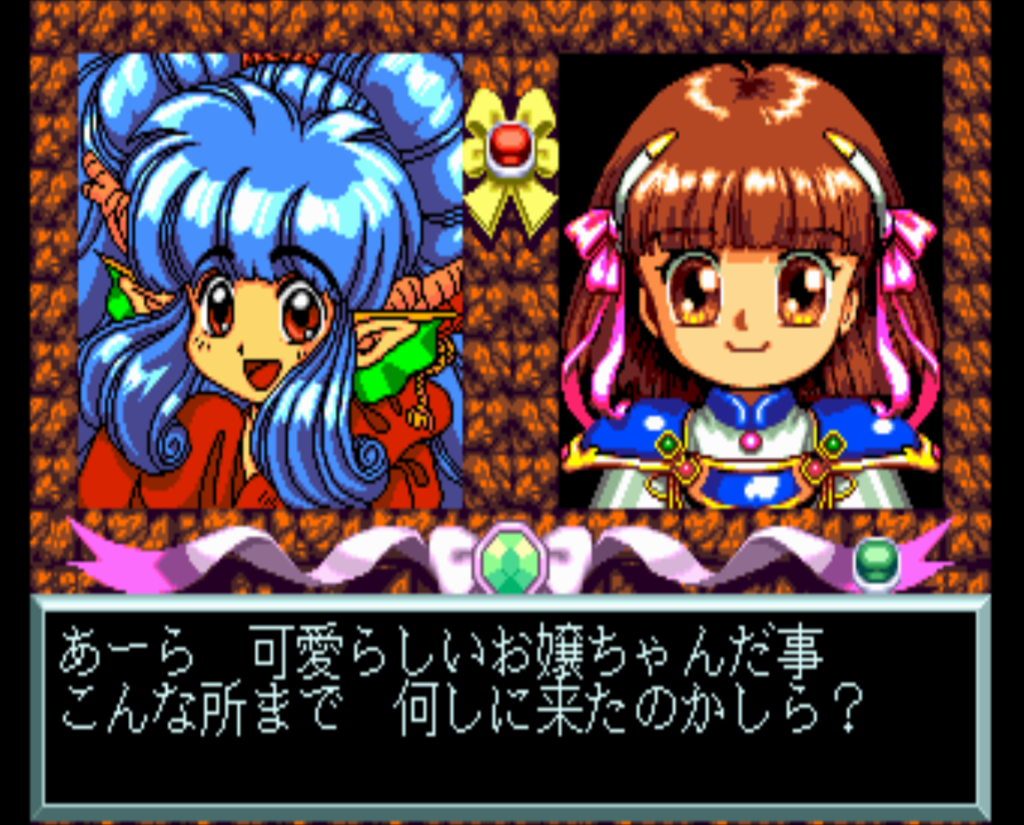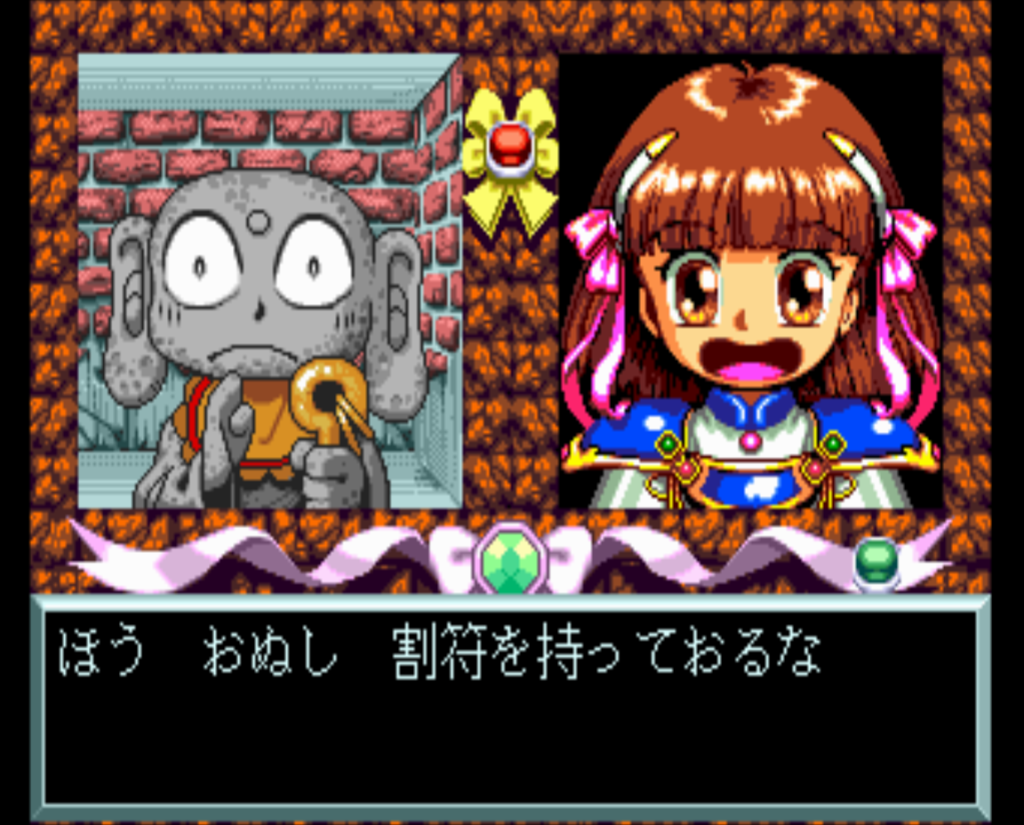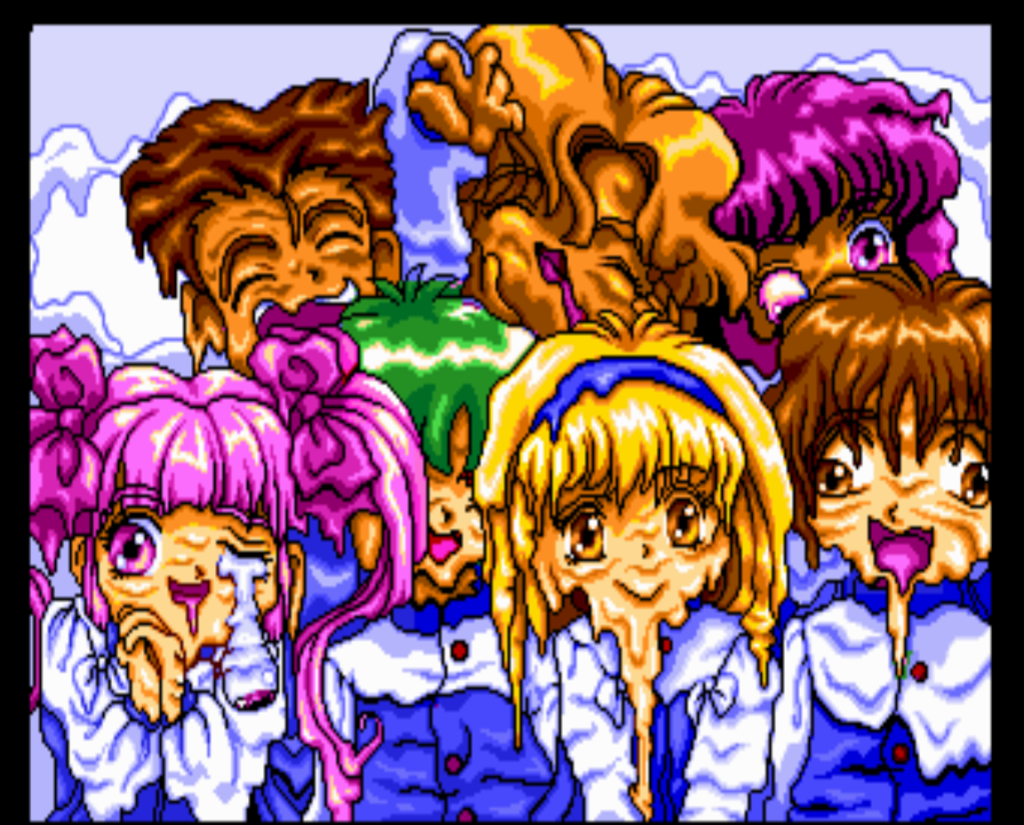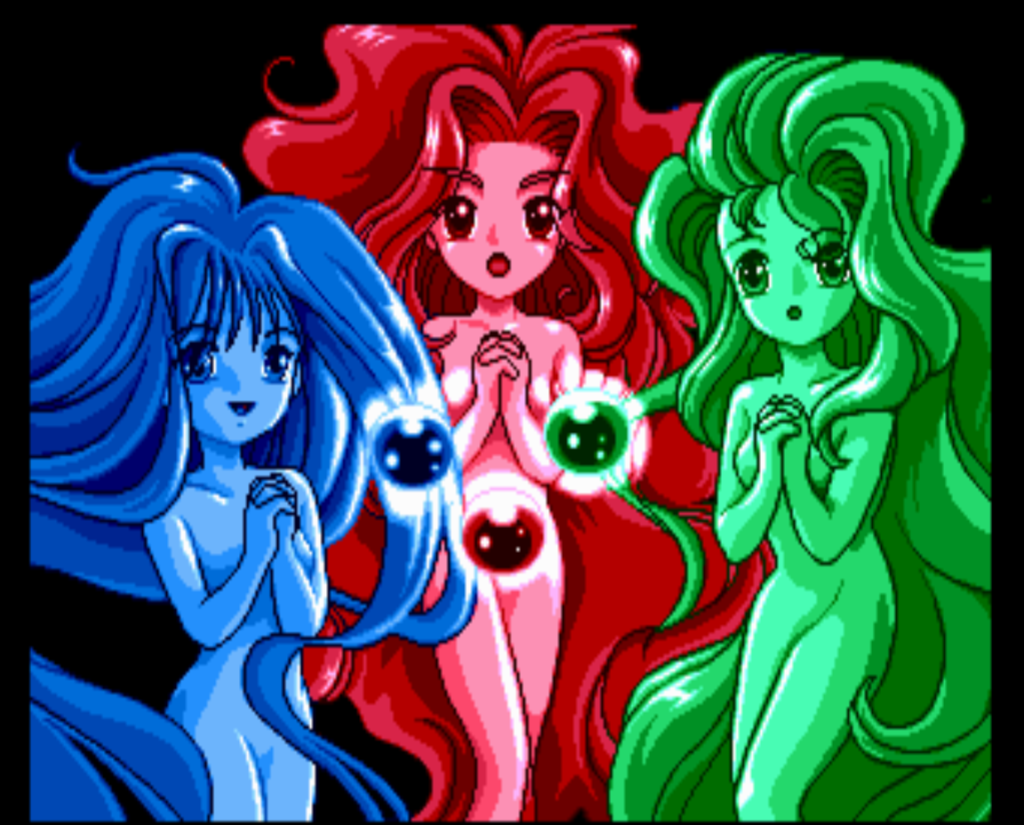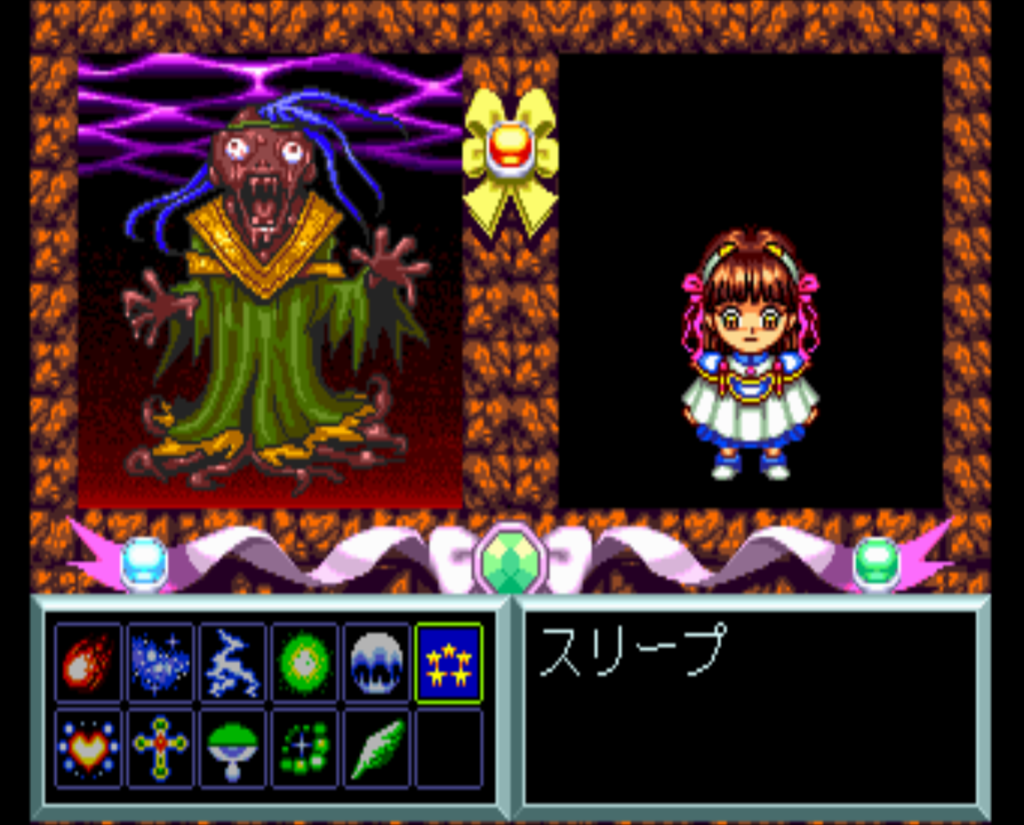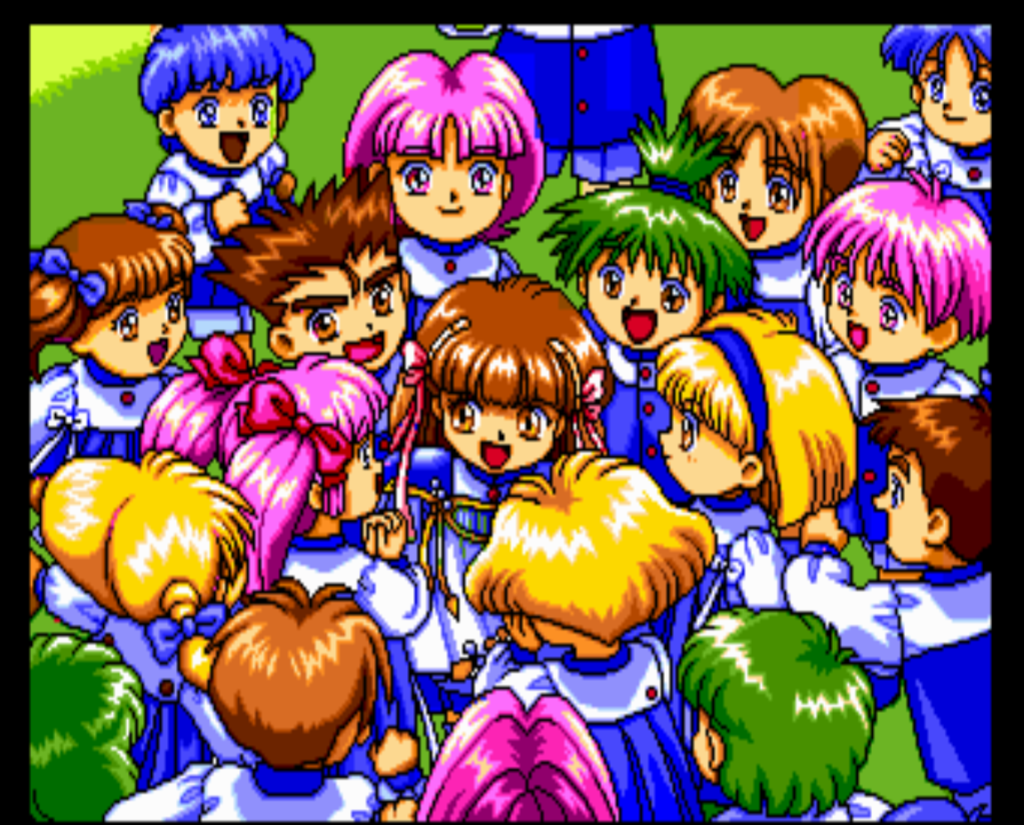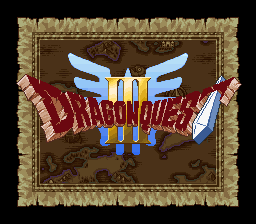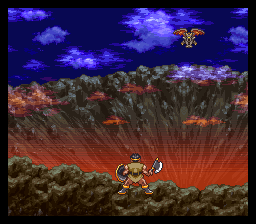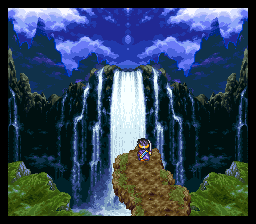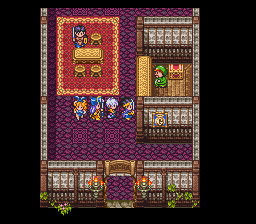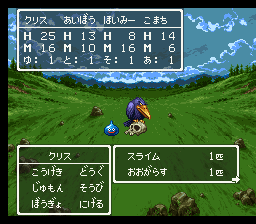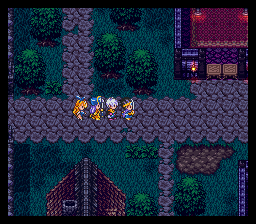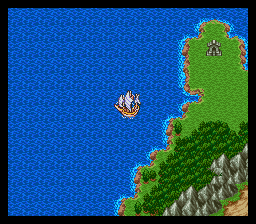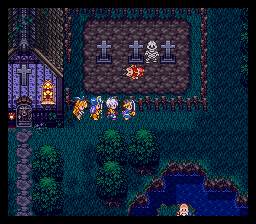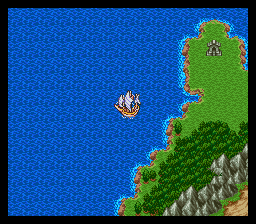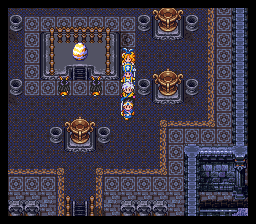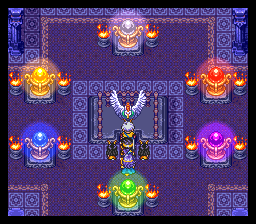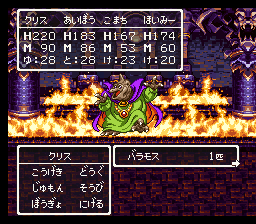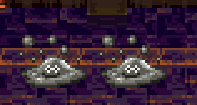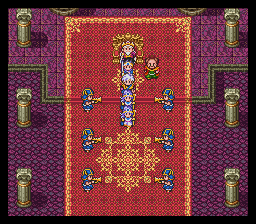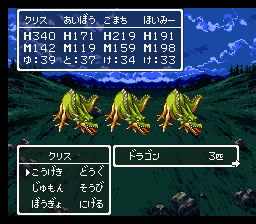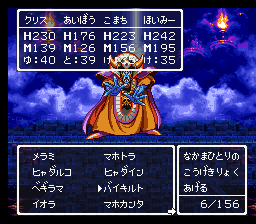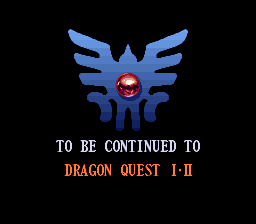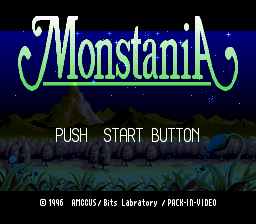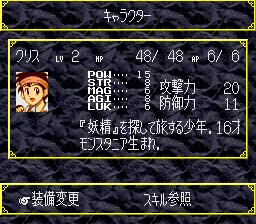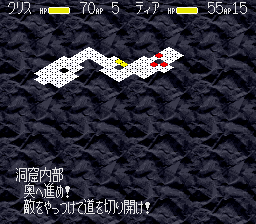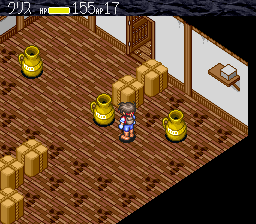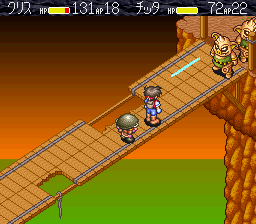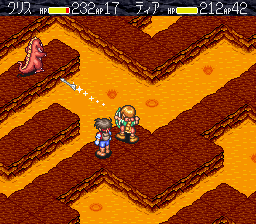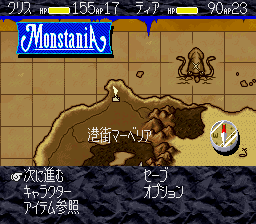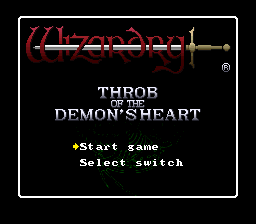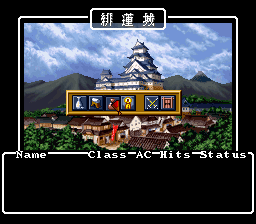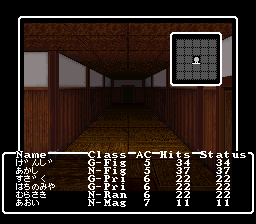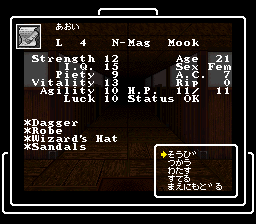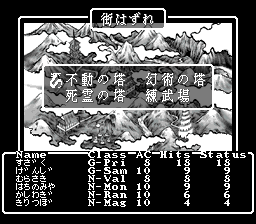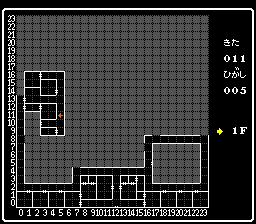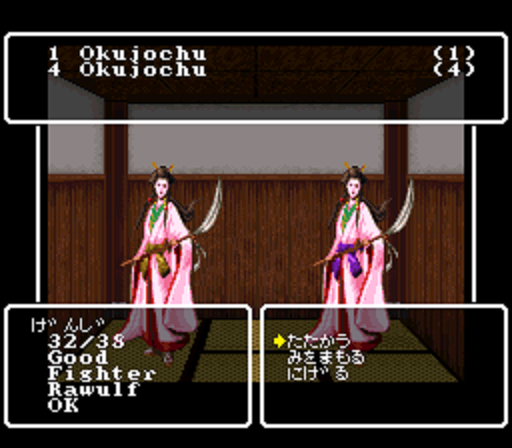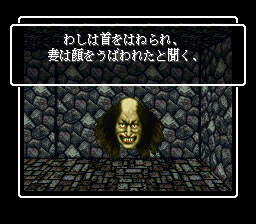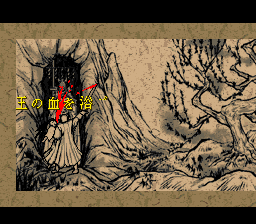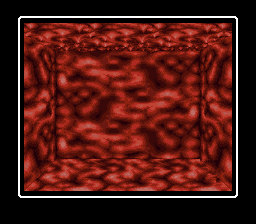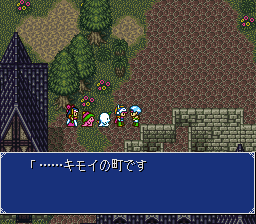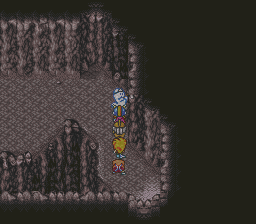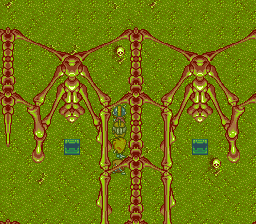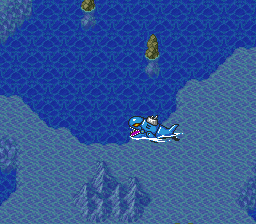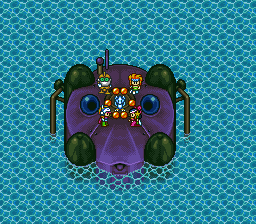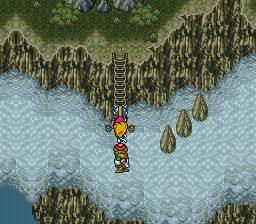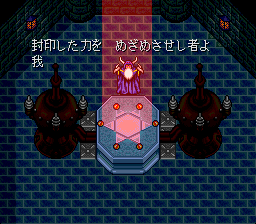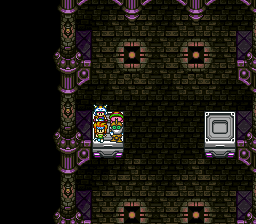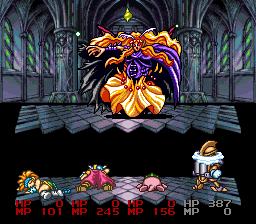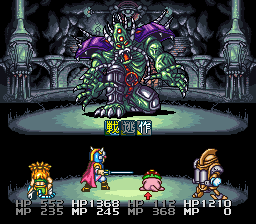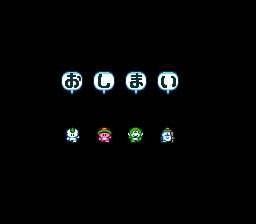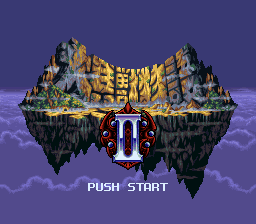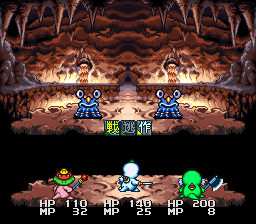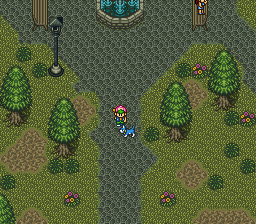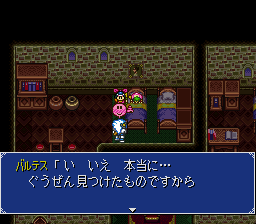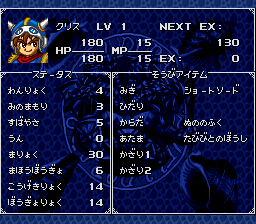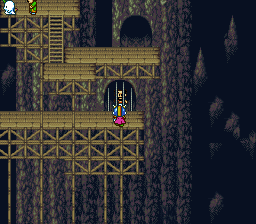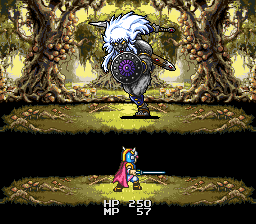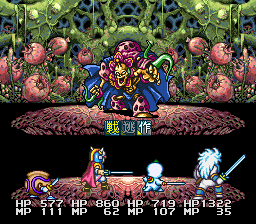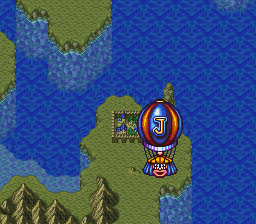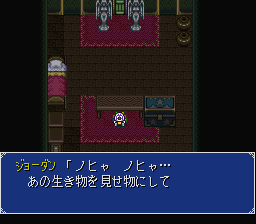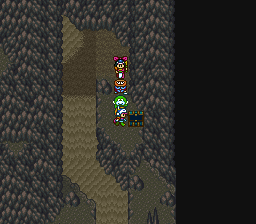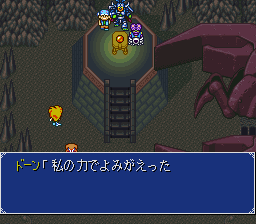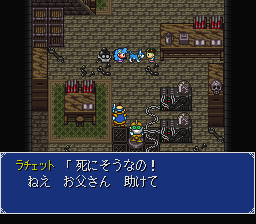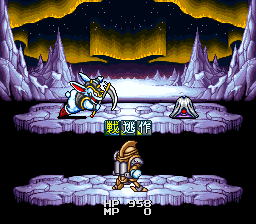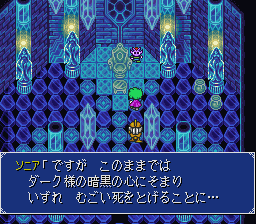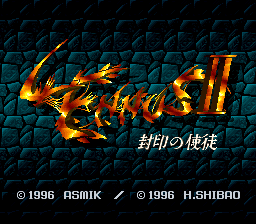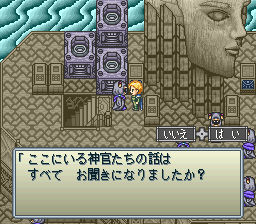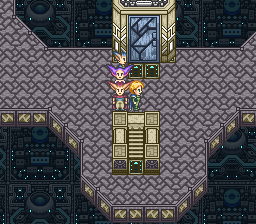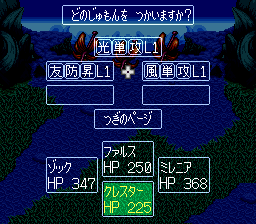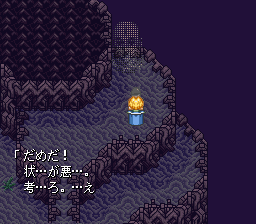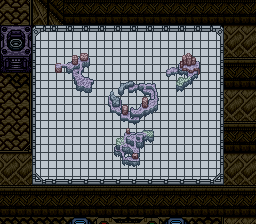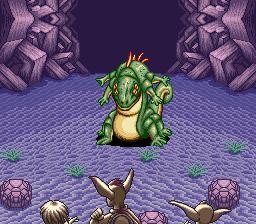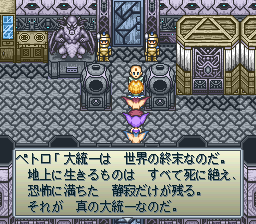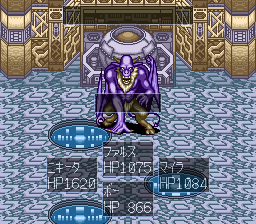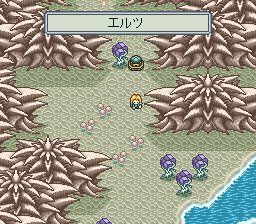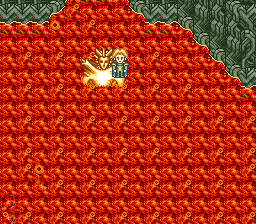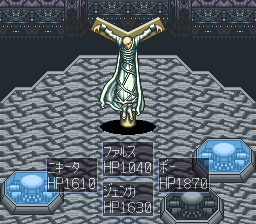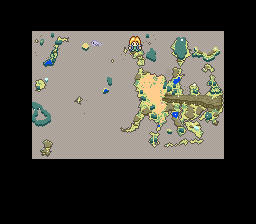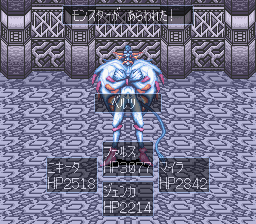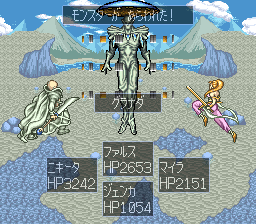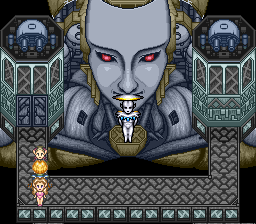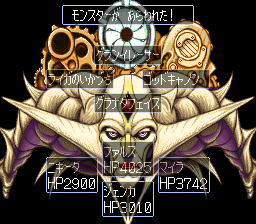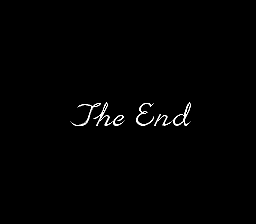G.O.D. (G.O.D~目覚めよと呼ぶ声が聴こえ~), released 12/20/1996, developed by Infinity, released by Imagineer
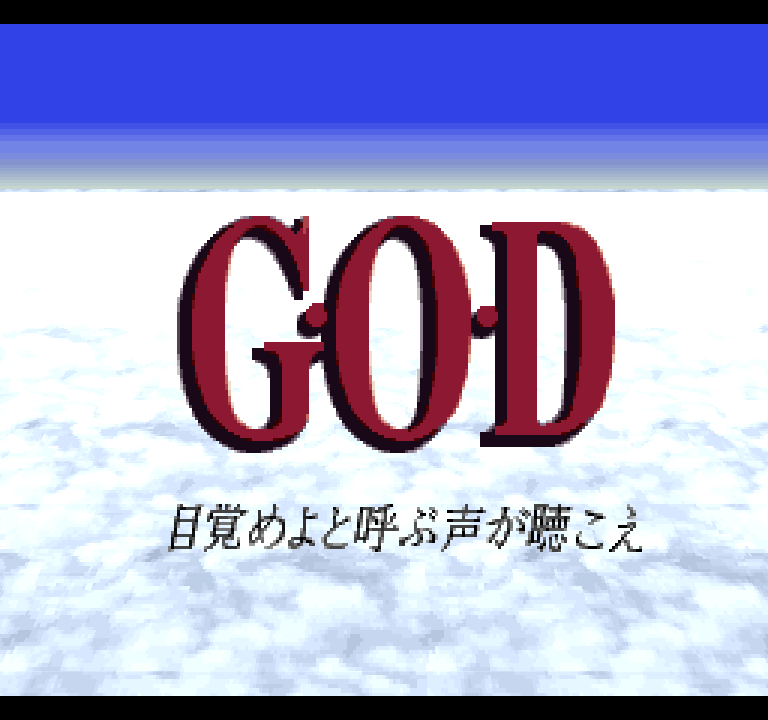
This is the final game of 1996. The strange sounding title seems to be a Japanese translation of the German chorale Wachet auf, ruft uns die Stimme (“Sleepers wake, a voice astounds us” in the usual translation sung nowadays), which was the basis for one of Bach’s best-known cantatas BWV 140.
The game begins with you choosing your name and the title you call your mother by (I picked “okaa-chan”).

Kurisu is riding his bike to Hokkaido by himself for some reason. You can talk to various people in the town and then it’s off through the fields. Eventually Kurisu reaches Tsubane village (I’m not sure if this is a real place), where some bullies challenge him and it’s time to learn the battle system. At the moment all we can do is attack, though.
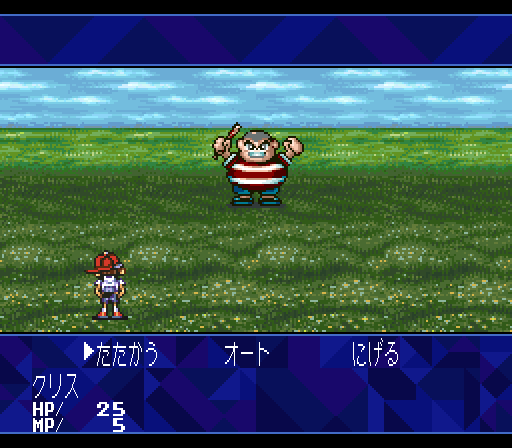
This game uses the hi-res text system that is found in other games of the period. After beating the bully Kurisu goes to investigate a ghost on Tsubane mountain, where he finds a boss bat that becomes a recurring comic character throughout the game.
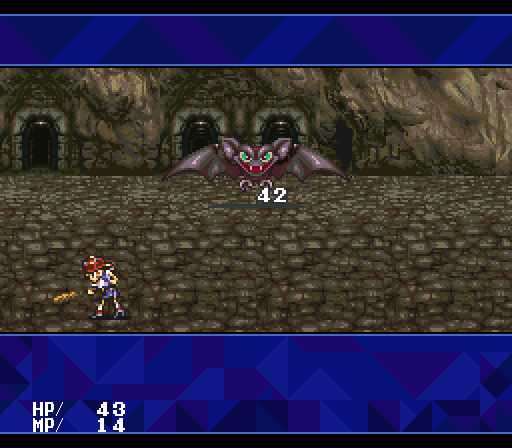
After beating the bat, Kurisu comes across a “god stone” inside the cave.

He hears a shaking and then goes out to see alien ships invading the Earth.
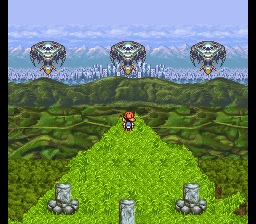
The scene then suddenly shifts to 10 years later (2006) where Kurisu is working for an organization called BLESS that is dedicated to fighting the aliens. It seems that Kurisu was an amnesiac but now has recovered his memory (the first part of the game). Kurisu immediately goes back to Tsubane Mountain to find the god stone again, which awakens an unused part of his brain.
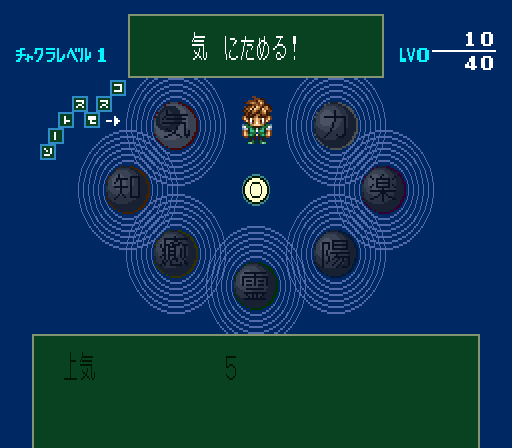
Each time you find one of the seven God Stones, you can unlock an additional level of Chakra power. To actually learn the Chakra abilities, you have to get Cosmo Stones from beating the monsters, which will add points to the ability you have selected. You can earn points in a different ability from the one you have equipped to use the powers from. Once you reach Level 4, you can pair two abilities (if they are at least level 4) and then you’ll get to use both of them, plus get an additional passive ability. At level 7, all of the Chakra powers for that command will get a big upgrade.
Personally I found that prior to reaching the level 4 combos, the Chakra commands were not very useful (with the exception of the Hundred Fist attack technique). However some of the L4 commands are quite powerful — particularly the ones that absorb HP/MP from the enemy, recover HP/MP, and let you attack twice.
In addition to the Chakras you also have Psycho powers which are basically spells.
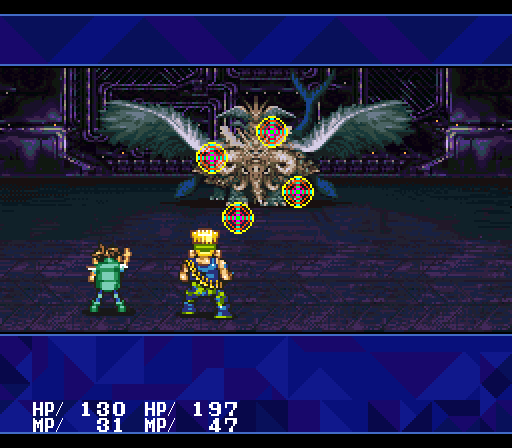
However by this point the biggest issue with the game becomes clear — how slow and sluggish everything is. The key/button response is slow, there is loading time, and battles take a long time just because everything seems to be moving through molasses. Although I thought that overall this game was pretty good, this sluggishness really keeps it from being in the top tier of games. It was remade for Playstation in 1998 and from what I can tell from videos, the PS version runs much more smoothly.
The first 2/3 of the game or so involve travelling around the world, finding the God Stones, and gathering the game’s three companions:
- Heath (the dude in the above picture), who works at the Neo Kobe bless group and fights with guns. He’s powerful but his defense against spells is so low he often dies, and his speed is low as well. Later on with a x2 attack effect he’s quite good.
- Mina, a girl with psychic powers who can read people’s feelings and intentions. She is the primary healer although she can cast some damage spells as well. I mostly used the absorb HP/MP ability although later I switched that to the “recover MP” ability.
- Basil (I guess?), some kind of Tibetan monk who used to be a thief. He has a lot of powerful attack spells; I didn’t find him as useful as Mina but he can offer some support.
The healing spells and items never seem adequate to keep up until the very end of the game. There’s no point to the “Miss You Turbo” item which raises dead with 250 hp, because that’s functionally the same as the “Miss You”‘s effect of 25 hp, based on the damage the enemies do. Too many of the mid to later game bosses seemed to depend a lot on luck of hoping they didn’t spam their powerful abilities.
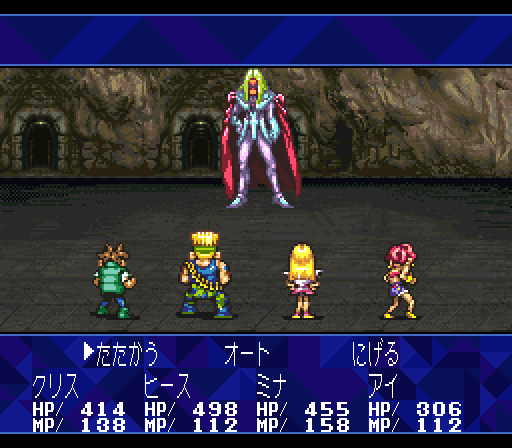
Along the way, they keep getting opposed by Michael, who tells them to turn back but gives no explanation for why. He just reduces everyone’s HP and MP to 1 and then leaves.
Meanwhile we go through the usual process of getting a ship and then later an airship.
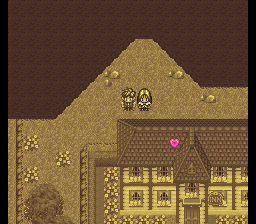
Before Basil joins, we have a 4th party member Ai, who Heath has a romantic night with and then she later becomes pregnant. She stays behind at one point while we do some jobs, but then on the way back the aliens have attacked the place she was staying.
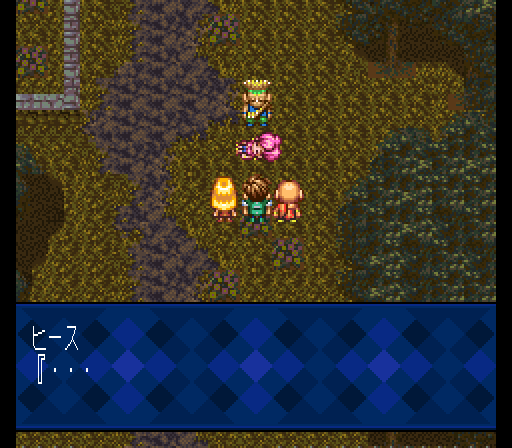
Ai and her unborn child are both killed. There are a few pretty dark story elements like this throughout the game.
The story doesn’t really develop beyond the fetch-quest travel nature until the last third or fourth of the game.
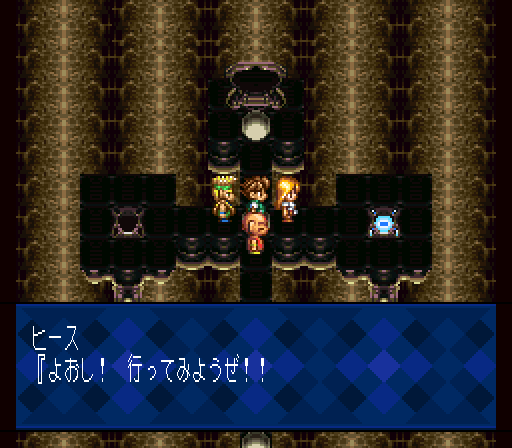
Eventually the party learns that the aliens are actually from Earth; they existed before humans but after everything was destroyed by God in the great flood, they took off into space on Noah’s Ark. But now they are reclaiming the planet that was once theirs. The final destinations are the three lost continents — Lemuria, Muu, and Atlantis, as well as the Lunar City where the aliens currently are (mostly in cold sleep). Atlantis of course comes from Greek sources, where as Lemuria and Muu were 19th century hypothetical lost islands that were theorized to explain certain issues of biological origins before plate tectonics and continental drift were understood.
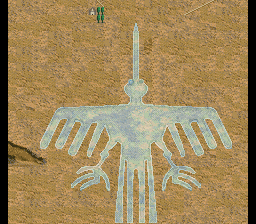
In Atlantis, Kurisu encounters his mother again, who has been turned into some kind of alien-human hybrid that is giving birth to all the aliens and monsters on the Earth.
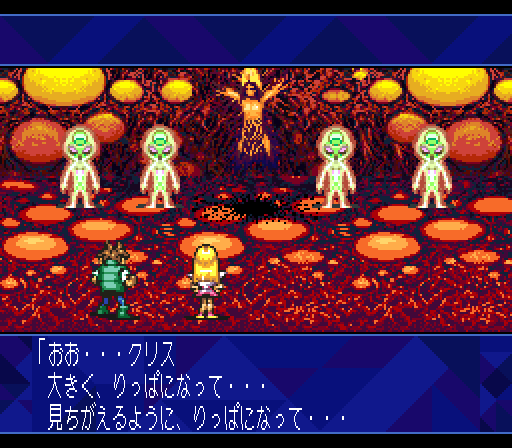
Partway through the battle she starts to heal us, and eventually begs us to kill her so that the aliens will stop appearing….and Kurisu complies.
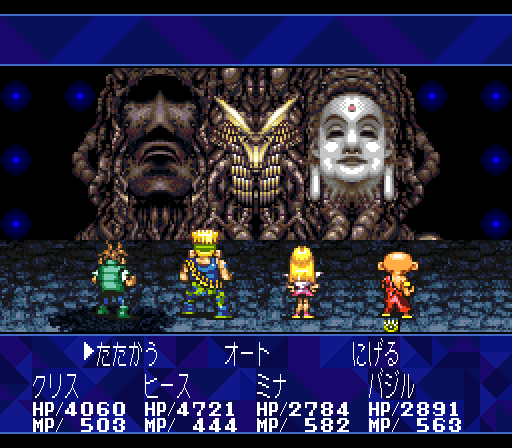
The final showdown is in Muu, where Ra Mu the leader of the aliens is. Following richie’s recommendation in his GF walkthrough I got to level 54 and then took him on — this might have been a bit too much because the boss was pretty easy despite the 7 different faces in three phases.
However, it’s still not over. The final boss is God himself, who wants to absorb all humans back into himself to make the perfect being, and he destroys the Lunar Base with the cold sleep aliens to prove his power. We decide to fight him (I forgot to get a screen shot, but it’s just depicted as light with no body) and eventually defeat him.
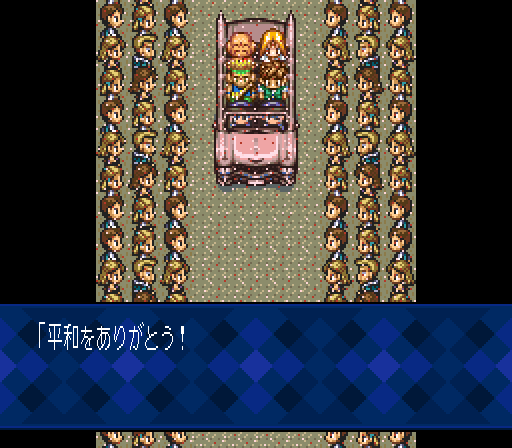
But the game is still not over. We get a big parade and a feast, but a little boy is scared of us — if we beat God, does that mean that we are now God? After the credits roll and you get the End screen, it says “Will you continue?” If you pick no, you get this:
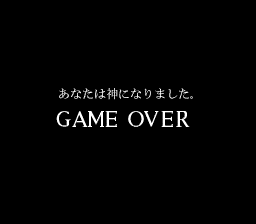
If you pick yes, the party wakes up uneasy about what the boy said and they go to the south pole to an Earth Shrine. There, they take on manifestations of their sorrow, fear, and anger. You have to use healing spells to win the fights or remove all your equipment. It’s not entirely clear to me what this is supposed to mean; after the fights it shows everyone’s life afterwards and you get an ending but the “are you now God” question doesn’t really seem to be answered or even addressed.
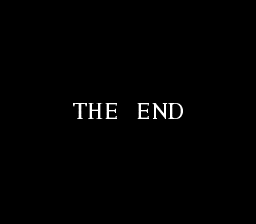
Overall this is a decent game. As I said above, the sluggishness of everything is a huge problem, and I would probably recommend the PS version if you can read Japanese (otherwise you will have to do this one since it has a patch).
We’re done with 1996! All that is left are four 1997 games. The next post on SFC games will be January 13, although I will have at least one other post next Saturday.
